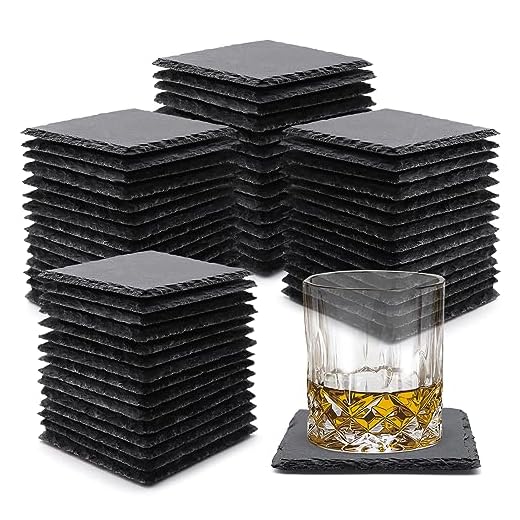



Pouring a light beverage over a deep hue mark can yield surprising results. This technique may help to lift the color, but timing and application are crucial. Start by blotting the affected area gently with a clean cloth to absorb excess liquid. Avoid rubbing, as this can spread the mark further.
Next, apply a small amount of the lighter drink directly onto the blemish. Allow it to sit for a few minutes. The acidity in the liquid can assist in breaking down the pigments from the darker liquid. Afterward, dab gently with another cloth, and rinse with cold water. Repeat if necessary, but be cautious not to over-saturate the fabric.
While this method can be effective, results may vary based on the material of the item. Always test a small, inconspicuous area first to ensure no damage occurs. For persistent marks, professional cleaning may be the best choice to retain the integrity of the fabric.
Can a Light Beverage Remove Dark Beverage Spots?
Pouring a light beverage onto a dark spot won’t reliably erase it. The process is more nuanced and requires immediate action for the best results.
Steps to Tackle the Mark
- Blot the area gently with a clean cloth. Avoid rubbing, as this can spread the mark.
- Apply salt or baking soda to absorb the liquid. Let it sit for several minutes before gently brushing it away.
- Use a mixture of dish soap and hydrogen peroxide. Test on a small area first. Apply gently and blot, then rinse with cool water.
- If the spot persists, consider a commercial stain remover designed for tough marks.
Additional Tips
- Always act quickly; the sooner you address the issue, the better the outcome.
- Heat can set the stain, so avoid hot water until it’s completely removed.
- For fabrics, check care labels before applying any cleaning solution.
Experimenting with different methods may yield the best approach for your specific situation. Remember, prevention is key; using coasters can help avoid these mishaps altogether.
Understanding the Chemistry of Wine Stains
Acetic acid and tartaric acid play significant roles in the discoloration process. These compounds, alongside pigments such as anthocyanins, contribute to the deep hues found in certain beverages. When spills occur, the interaction of these elements with fabrics can result in lasting marks.
To effectively combat discoloration, it’s essential to act swiftly. Blot excess liquid immediately using a clean cloth to minimize absorption. Applying a solution of cold water and mild detergent can aid in breaking down the compounds responsible for the tint. Rinse thoroughly to prevent any detergent residue from setting in.
The temperature of the liquid can also influence the stain’s persistence. Warmer temperatures can enhance the absorption of pigments into fibers. Thus, using cold water during the initial cleaning process is recommended.
Additionally, enzymatic cleaners can be particularly beneficial. These products work by breaking down organic matter, making it easier to lift stains. Always follow the manufacturer’s instructions for best results.
Finally, testing any cleaning solution on an inconspicuous area of the fabric before applying it to the stain is wise. This precaution helps ensure that the cleaner won’t cause further damage or discoloration.
Step-by-Step Guide to Using White Wine on Stains
First, act quickly. The sooner you address the mark, the better your chances of successful removal. Blot the area with a clean cloth to absorb excess liquid. Avoid rubbing, as this can spread the blemish further.
Next, pour a small amount of the lighter beverage directly onto the affected area. Make sure to use a generous amount but avoid saturating the fabric excessively.
Gently blot again with a clean cloth, working from the outside of the mark towards the center. This method helps prevent any further spreading of the discoloration.
After blotting, sprinkle a pinch of salt or baking soda over the damp area to help lift the residue. Let it sit for about five minutes to absorb the liquid.
Following this, rinse the fabric with cold water to remove any remaining residue and the absorbent material you used. Ensure you rinse thoroughly to prevent any remnants from setting.
If the blemish persists, consider using a mild detergent. Create a solution with water and a few drops of detergent, then apply it to the mark gently, following the same blotting technique.
Finally, launder the fabric according to its care instructions. Avoid heat until you’re sure the blemish is completely gone, as heat can set any remaining traces.
| Step | Action |
|---|---|
| 1 | Blot the area |
| 2 | Apply white liquid |
| 3 | Blot again |
| 4 | Add salt/baking soda |
| 5 | Rinse with cold water |
| 6 | Use mild detergent if needed |
| 7 | Launder as per instructions |
Alternative Methods to Remove Red Wine Stains
For effective removal of those stubborn blemishes, consider using club soda. Its carbonation can help lift the pigment from fabrics. Pour it directly onto the affected area and blot with a clean cloth until the stain fades.
Another option is to create a paste from baking soda and water. Apply this mixture to the mark and let it sit for about 30 minutes before rinsing. The mild abrasive properties of baking soda can assist in breaking down the stain.
For a more natural approach, try using white vinegar combined with dish soap. Mix equal parts of both ingredients and apply to the stain. Gently scrub the area with a soft brush, then rinse with cold water.
Hydrogen peroxide mixed with dish soap also works well. Use a 2:1 ratio of hydrogen peroxide to soap, apply it to the mark, and allow it to sit for a few minutes before blotting away.
If the stain persists, a specialized stain remover can be beneficial. These products are formulated to target specific types of marks and may yield better results than household items.
Lastly, always test any solution on an inconspicuous area of the fabric first to ensure it won’t cause further damage. For those capturing memorable moments while tackling tough stains, consider the best compact digital camera zoom panorama for quick snapshots of your progress!
When White Wine Might Not Work: Limitations and Considerations
Relying solely on this beverage for stain removal can lead to disappointment. It may not effectively tackle older or set-in marks, where the pigments have already bonded deeply with the fabric. For optimal results, treat fresh spills immediately; once time passes, the likelihood of success diminishes significantly.
Another factor is fabric type. Delicate materials, such as silk or wool, might react adversely to acidic components present in the liquid, potentially causing more harm than good. Always test on an inconspicuous area first to assess compatibility.
Additionally, the process can be inefficient for darker fabrics, as the contrast between the two liquids may create a new, unwanted discoloration. Using a light-colored cloth to absorb the spill may yield better results than relying on this approach alone.
In instances where a tannin-heavy variety is involved, a different strategy may be necessary. The interaction of these compounds with the liquid could hinder the removal process, necessitating alternative cleaning agents.
Finally, remember that multiple applications might be needed, and results can vary based on the specific situation. Always have a backup plan in case this method doesn’t yield the desired outcome.
Preventing Stains in the First Place
To minimize the risk of deep color marks during gatherings, consider using coasters beneath glasses. This simple barrier shields surfaces from potential spills, reducing the likelihood of a mishap.
Opt for darker-colored tablecloths or placemats when hosting events. These fabrics naturally camouflage any accidental drops, making them less noticeable. Additionally, using disposable or easily washable options can save time on cleanup.
Smart Serving Techniques
Pouring from a height can lead to splashes. Keep the glass closer to the surface when serving to prevent unintended droplets. Furthermore, encourage guests to take smaller sips and maintain awareness of their glasses to limit overfilling.
Warning Signs and Quick Actions
Be mindful of potential hazards, such as uneven surfaces that could lead to tipping. In case of a spill, act swiftly by blotting with a clean cloth rather than rubbing, which can set the pigment. Having a designated cleanup kit with club soda, salt, and cloths handy can be invaluable for immediate responses.
FAQ:
Does white wine really help remove red wine stains?
Yes, white wine can be effective in removing red wine stains due to its acidic nature. When a red wine spill occurs, pouring white wine over the stain may help to neutralize the pigments in the red wine, making it easier to blot the stain away. It’s recommended to act quickly, as fresh stains are easier to treat than dried ones. After applying white wine, you should blot the area with a clean cloth and then wash the fabric as usual.
What are some other methods to remove red wine stains besides using white wine?
There are several methods to tackle red wine stains. One popular approach is to sprinkle salt on the stain, which can absorb the wine. Another option is to use club soda, which can lift the stain when poured onto it. For fabrics, a mixture of hydrogen peroxide and dish soap can also be effective. Always remember to test any cleaning solution on a small, inconspicuous area first to ensure it doesn’t damage the fabric. Quick action is usually key in successfully removing red wine stains.









